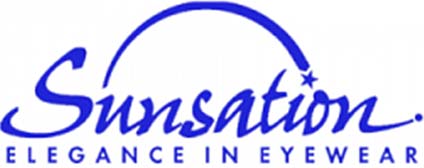
Have you ever left work with tired eyes, headaches, or difficulty focusing? While long hours in front of a screen are often blamed, the lighting in your workspace may also be a key factor. Poor office lighting—whether too dim, too harsh, or poorly positioned—can cause eye strain, discomfort, and decreased productivity.
At Sunsation Eyewear, we help patients in Brooklyn understand how their work environment affects their vision. Making simple adjustments to your office lighting can reduce eye strain, improve comfort, and protect your eyesight over time.
How Office Lighting Affects Your Eyes
Your eyes constantly adjust to different lighting conditions. In a well-lit environment, they work more efficiently, reducing strain and fatigue. However, poor lighting forces your eyes to work harder, leading to discomfort and potential long-term issues.
Common Vision Problems Caused by Poor Office Lighting
- Eye strain and fatigue from glare or dim lighting
- Blurry vision after long hours of screen use
- Headaches and migraines triggered by harsh overhead lights
- Dry eyes caused by excessive brightness or flickering lights
- Difficulty focusing on inconsistent lighting conditions
If you experience any of these symptoms regularly, your office lighting setup may need an adjustment.
The Best and Worst Types of Office Lighting
The Worst Lighting for Your Eyes
- Harsh Overhead Fluorescent Lights: Common in office settings, these can be too bright and flicker, causing discomfort and headaches.
- Dim or Inconsistent Lighting: If your workspace is too dark, your eyes work harder to focus, leading to strain and fatigue.
- Glare from Windows or Screens: Sunlight or reflections on your screen create glare, making it difficult to see clearly.
The Best Lighting for Eye Health
- Soft, Indirect Lighting: Use adjustable LED or warm-toned bulbs to create a comfortable and evenly lit space.
- Natural Light (When Controlled Properly): Position desks perpendicular to windows to reduce glare while still benefiting from natural light.
- Task Lighting for Close-Up Work: A desk lamp with adjustable brightness can provide focused light without overexposure.
How to Improve Office Lighting for Better Eye Health
1. Adjust Your Desk Setup
- Position your computer screen away from direct light sources to reduce glare.
- Use curtains or blinds to control natural light exposure.
2. Choose the Right Light Bulbs
- Opt for LED bulbs with a warm or neutral tone (between 3000K–4000K) to reduce strain.
- Avoid cool white or blue-tinted lights, which can be too harsh for prolonged use.
3 . Reduce Screen Glare
- Adjust your monitor's brightness to match the surrounding light level.
- Use an anti-glare screen filter if needed.
4. Take Breaks and Blink More
- Follow the 20-20-20 rule: Every 20 minutes, look at something 20 feet away for 20 seconds.
- Make an effort to blink more to prevent dry eyes.
Keep Your Eyes Healthy at Work – Schedule an Eye Exam
If you’re experiencing eye strain, headaches, or vision discomfort at work, your office lighting may be affecting your eye health. A comprehensive eye exam can help identify any underlying vision issues and provide personalized solutions for a more comfortable workday.
Book an appointment at Sunsation Eyewear in Brooklyn and give your eyes the care they deserve.
